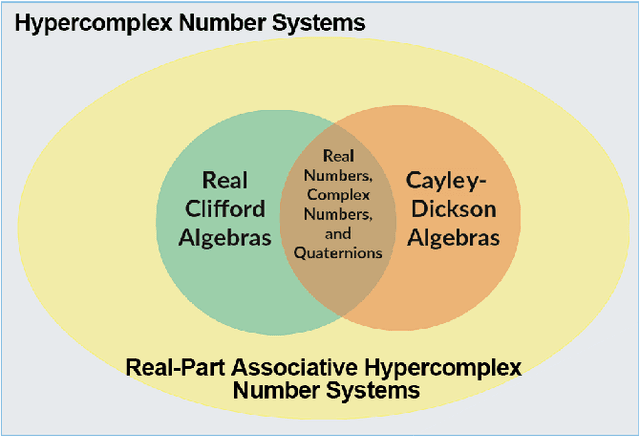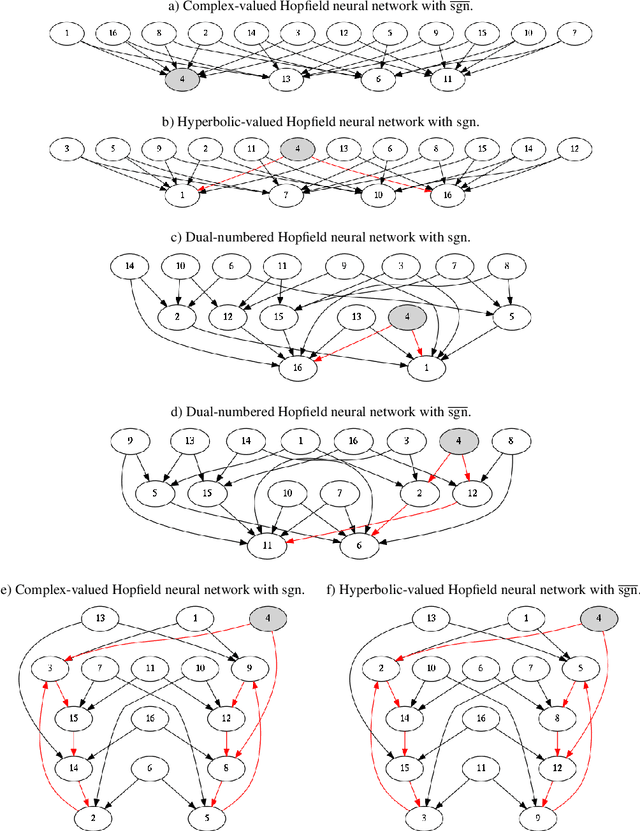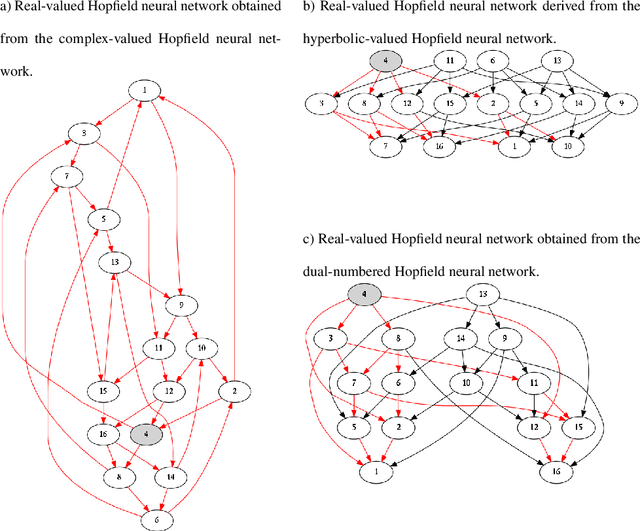Fidelis Zanetti de Castro
On the Dynamics of Hopfield Neural Networks on Unit Quaternions
Dec 13, 2021



Abstract:In this paper, we first address the dynamics of the elegant multi-valued quaternionic Hopfield neural network (MV-QHNN) proposed by Minemoto and collaborators. Contrary to what was expected, we show that the MV-QHNN, as well as one of its variation, does not always come to rest at an equilibrium state under the usual conditions. In fact, we provide simple examples in which the network yields a periodic sequence of quaternionic state vectors. Afterward, we turn our attention to the continuous-valued quaternionic Hopfield neural network (CV-QHNN), which can be derived from the MV-QHNN by means of a limit process. The CV-QHNN can be implemented more easily than the MV-QHNN model. Furthermore, the asynchronous CV-QHNN always settles down into an equilibrium state under the usual conditions. Theoretical issues are all illustrated by examples in this paper.
A Broad Class of Discrete-Time Hypercomplex-Valued Hopfield Neural Networks
Feb 14, 2019



Abstract:In this paper, we address the stability of a broad class of discrete-time hypercomplex-valued Hopfield-type neural networks. To ensure the neural networks belonging to this class always settle down at a stationary state, we introduce novel hypercomplex number systems referred to as Hopfield-type hypercomplex number systems. Hopfield-type hypercomplex number systems generalize the well-known Cayley-Dickson algebras and real Clifford algebras and include the systems of real numbers, complex numbers, dual numbers, hyperbolic numbers, quaternions, tessarines, and octonions as particular instances. Apart from the novel hypercomplex number systems, we introduce a family of hypercomplex-valued activation functions called Hopfield-type activation functions. Broadly speaking, a Hopfield-type activation function projects the activation potential onto the set of all possible states of a hypercomplex-valued neuron. Using the theory presented in this paper, we confirm the stability analysis of several discrete-time hypercomplex-valued Hopfield-type neural networks from the literature. Moreover, we introduce and provide the stability analysis of a general class of Hopfield-type neural networks on Cayley-Dickson algebras.
 Add to Chrome
Add to Chrome Add to Firefox
Add to Firefox Add to Edge
Add to Edge